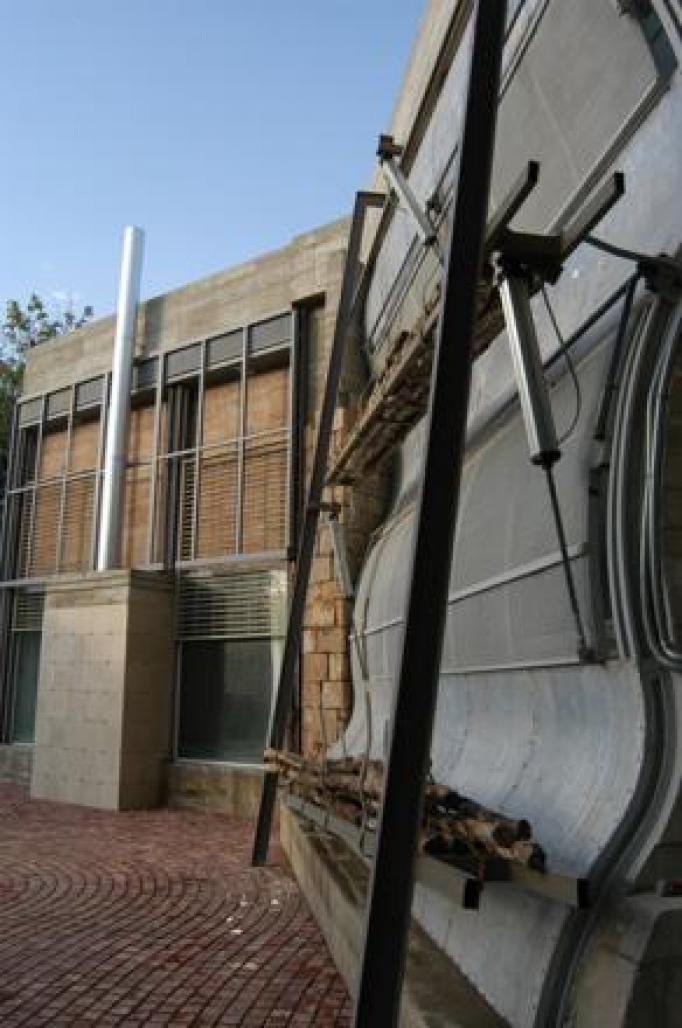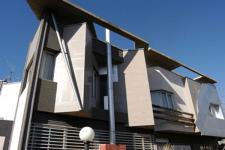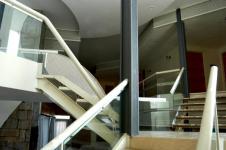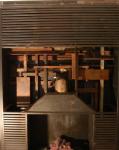The tetrasomic body of House No. 3 is immanent to its peculiar design process which deliberately encompasses four parameters in an affirmative but architectonically autonomous way. Parameters here delineate elements as initia not constituents, or in other words, minimal principia {axiomatic minimalism} – as the scalar or vector axes – requisite for the process of design and architecturation, not constituents as a collective that establishes a disposition or an inclination of a higher regime or whole which is synthetically deduced from their involuntary interactions and the shared sum of their logical necessity. To enumerate these parameters is to outline the design axes of House No. 3 in connection to both its enclosing and encapsulated environments, the confinium of the outside and the regnum of the inside, hence the inflection of the external side of these parameters to the building and the deflection these principals from their predeterminations through the act of participation with the building process {as an event in itself and for its populating entities} in its entirety. These parameters include {i} nature, {ii} civic signs, {iii} scale and {iv} montage.
Nature. If the amorphous dynamism of nature is considered to be the full body of parsimony despite its opulent selflessness, it is because nature can not invest itself out of its developing extension and enveloping space which is that of growth. House ontologically – irrespective of all those super-ficial mimeses of the natural – is posited in regard to nature as a pause or an intermitting entity, a prosthesis as extensio ad effectus in contradiction to the nature’s extensio ad infinitum which ensues the undoing of building as a transitory extension or prosthesis, the devolution of all fulfillments and successions in the name of growth’s infinitude and unbound contingency. Building to the zero tolerance or infinite growth {b/0} is irresolution. However, nature can donate its parts, in an act of radical indifference to artificiality rather than separation or estrangement {discidium} of it parts which in the wake of its infinitude can not be effectuated other than by giving rise to a new unboundedness which again is not compatible with the prosthetic process of building. Transplanting these parts in the House is based on the definite and determinate image of the natural parts before seizing them from their natural environment, an interfering separation {in the sense of interloping} that is carried out through the indifference of nature to artificiality. In House No. 3, natural items are inverse-prostheses, a utilization based on their last emphatic roles in nature as extensio ad infinitum engrafted on to the building, prosthetic immanence bleeding into metric transcendence: amphibian immanence.
Civic Signs constitute our behavioral patterns towards items and definitions which uphold and carry with themselves the ergonomic obligations as simultaneously agreements and imperative requirements. They are formative entities which present boundaries as the very dynamic entities of bounding and unbounding, pragmatic enclosures and liberations in regard to the logic of movement and interaction with entities. Civic signs which emerge out of the consensus or mutual rules between desiderata {of the environment} and the logic of Things from the perspective of the Thing itself {tool-being} have been staged in the House to fully exercise their logic of chain movement, transition and isolation, the urbanomic performance in the most concrete and exposed way. The employment of civic sign perforates the House from within and from without to the urbanomic space {a nomenclature compiled by the words urban and ergonomic} whose plane of activity determines the definition of speed, facilitation and repetition, or in other words, the axial civic definitions, the civic outside. If applying the logic of civic signs to the building introduces limits into it, these limits in turn pull the obje
2000
2002








